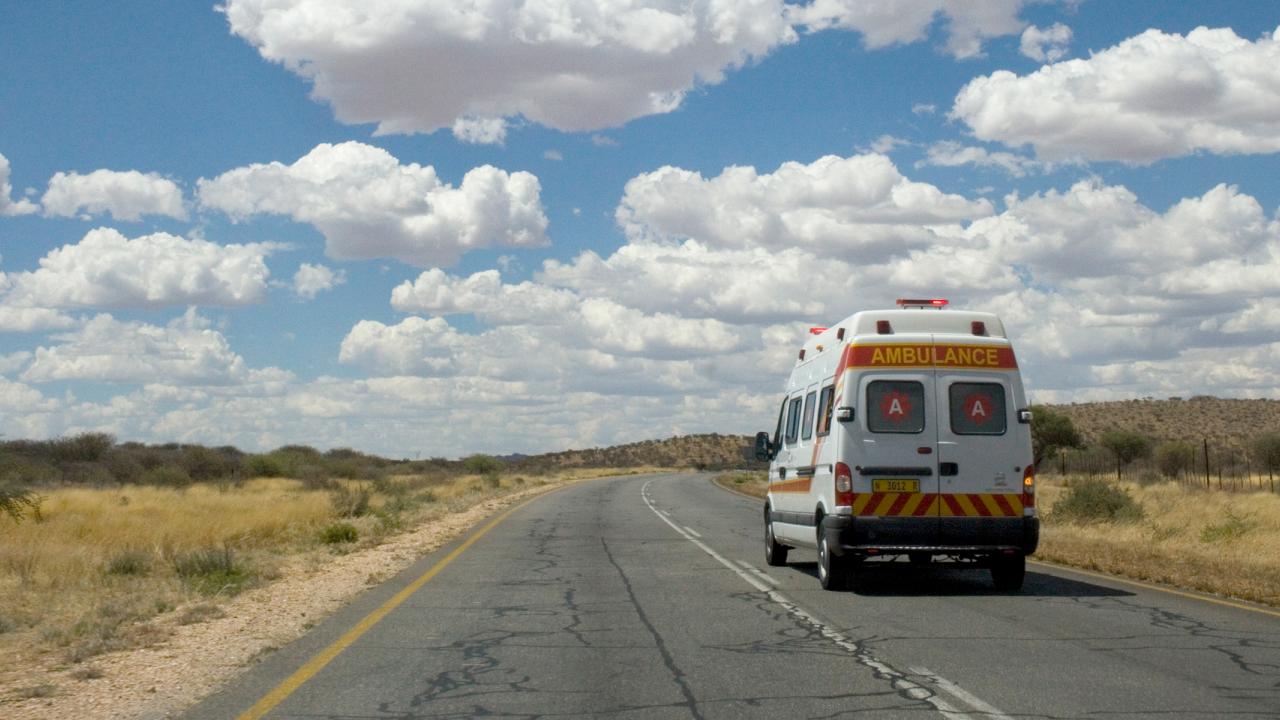
Interventions help to dramatically cut down response time in central Namibia, increasing odds for saving lives.
An ambulance races back to a central hospital in Windhoek, Namibia, from an outlying region south of the capital. The call had come in to the dispatcher of the ambulance service one day in early 2009. A woman at Roman Catholic Hospital was experiencing complications during labor and needed to be taken to the Windhoek Central Hospital, just three kilometers away.
But the district’s working ambulances were tied up, and by the time one became free, two hours had passed. And by the time medical staff helped deliver her baby, it was too late.“After the baby died, the doctor called me and told me what happened,” said John Silawa, senior ambulance officer in the Khomas region in central Namibia, which includes the capital Windhoek. “We felt very badly - a patient was lost because of our delay.”
It wasn’t the first time. When The Synergos Institute started its review of Namibia’s health system in 2008, the country’s poor performance in maternal mortality stood out. When analysts dug deeper, they found several potential reasons for the increase in deaths, including an emergency-transportation service that had broken down over the years.
“One of the biggest problems was that ambulances were being used as regular transporters, taking people from one hospital to the next, often for non-emergency services,” said Len le Roux, Synergos’ director in Namibia. “That meant they often didn’t have ambulances available for an emergency call, and their response time was incredibly poor. It took 120 minutes on average to reach people in the district, which was unacceptable.”
As part of its work with the Ministry of Health, Synergos assembled a small team of leaders in the Ministry and those running the emergency-transportation system in the Khomas region, which includes 13 health clinics and one large referral hospital. They decided that they needed to separate the transportation system into two services: one to ferry people for hospital or clinic visits and the other to respond to emergency calls.
First, they learned that the government had budgeted money for new transportation vehicles; no one had thought before to ask for the money. In a matter of weeks, the Khomas service received two new vans that could seat up to 18 people, both paid for with government funds. That freed up the aging fleet of five ambulances. Second, they set up a “dashboard” computer system to help monitor the performance of the ambulance response time; each call and response was entered electronically, and the ambulance squad also kept track of each vehicle on a board hung on an office wall. For the first time, the group also started handover meetings between shifts, passing on information on vehicle performance and the current location of all five ambulances.
“What I think about Synergos...is that they have done something good for the whole of the community of our society.”
– Vairee Kamberipa, Ambulance Officer, Windhoek
The results were immediate.
In just a few months, the average response time for an emergency call was lowered to 28 minutes. In two separate cases - one in which a person ate something poisonous, and another involving a pregnant woman in distress - the response time was eight minutes.
“What’s happened with the improved emergency response system is that they are increasing the probability of saving lives,” le Roux said. “And by bringing in two new transporters, they have improved the referral system, where people can use the clinic on the periphery of the district and then if they need special attention, can be taken to the hospital and then brought back to the clinic again.”
The difference, he said, wasn’t just about reaching far-flung areas, but also making sure that all poor communities had access to health care.
For Silawa, the senior ambulance officer, the change has been dramatic.
“This is lifting up our ambulance services,” he said. “We have improved in a lot of areas. We’re better organized, we can get to the clinics to pick up patients faster. Before, we were overloading the ambulances with people who just needed a ride to the hospital. Now, we are using the ambulances for their designed purpose - only for emergency cases. It’s a great change.”
The change, for Namibia, is just beginning. The Ministry of Health has asked Synergos to bring its new approaches for maternal health to other regions. And as part of that work, it will help revamp ambulance services in other regions in 2010.
More information
- Saving Mothers’ Lives in Namibia (video) from McKinsey & Company
- Namibian Health Authorities Tackle Maternal Mortality
- Moving Quickly on Emergencies